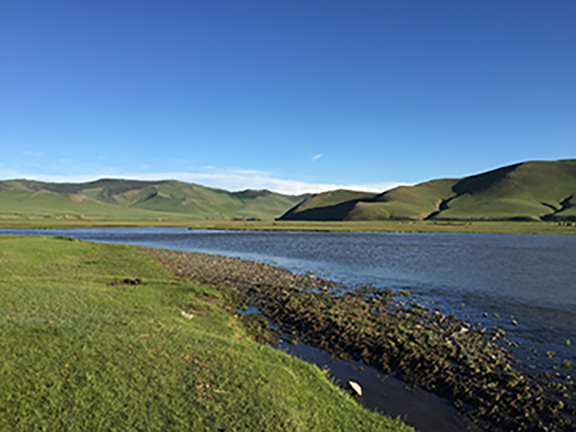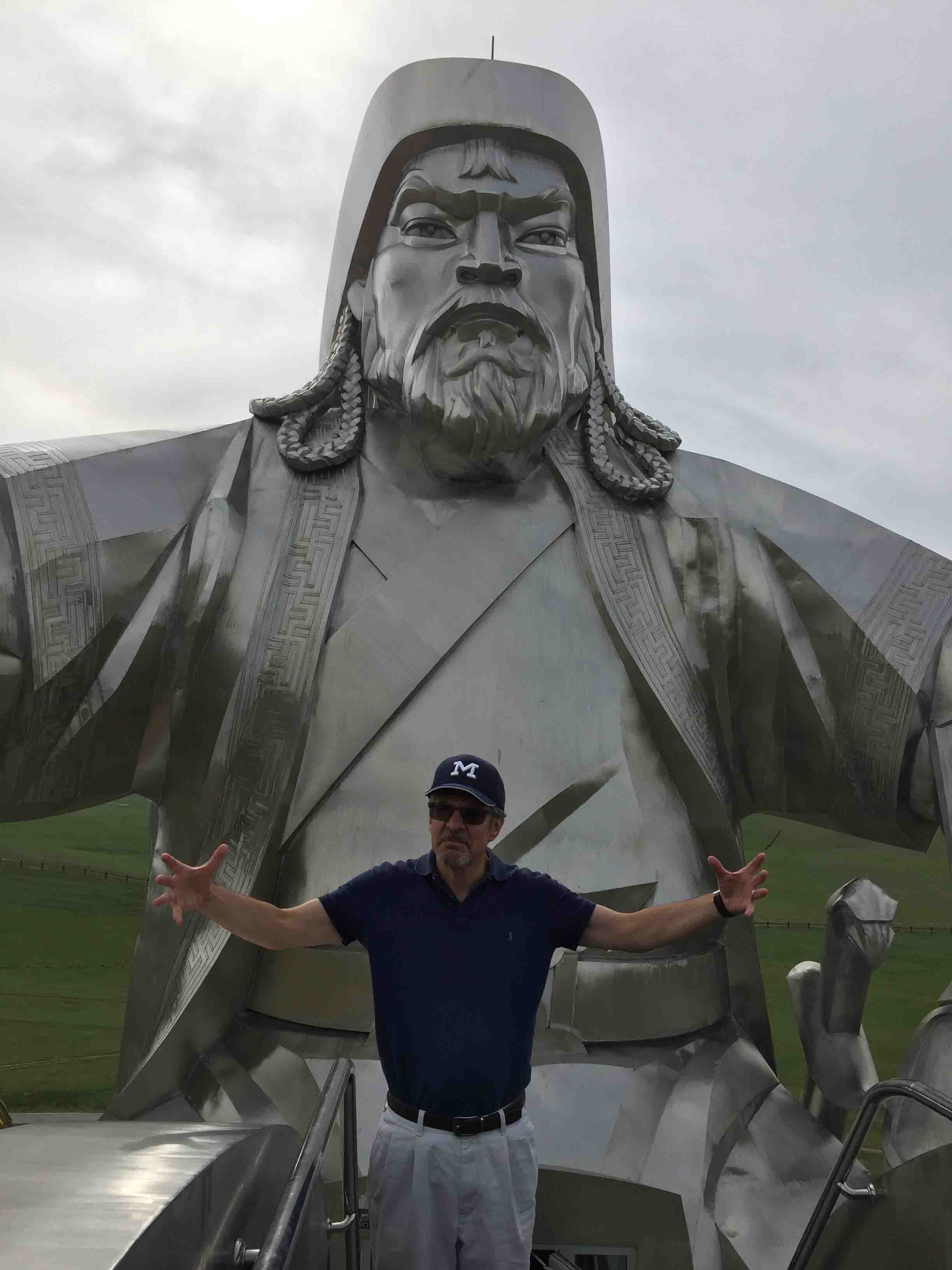
10-20 in. of rain annually
Mongolian Steppe

Base of Turks, Uighurs and Mongols
Born Temujin
Lake Baikal region
Son of minor chief
Warfare
Surrendered tribes spared
Alliances
Marriage politics
Multiple wives in steppe society vs. wife-concubines in China
Khuriltai (assembly), 1206
Capital at Karakorum

Why are we standing next to evidence of state-forced Chinese migrants at Karakorum?
Khan of Khans |
Southward |
Westward |
| Chinggis Khan, r. 1206-1227 | Xi Xia (Tangut), 1210 Jin (Jurchen) Beijing, 1211-5 Xi Xia (Tangut), Chinggis Khan killed, 1227 |
Khwarazm Shah: Bukhara & Samarqand, 1219-1221 |
| Ögödei, r. 1229-41 | Jin (Jurchen), Kaifeng, 1234 | Russia & Ukraine, 1237-40 |
| Güyük, r. 1246-48 | ||
| Mongke, r. 1251-1259 | Iran & Iraq, 1258-60 |

According to Skaff, why does modern Mongolian nationalism give too much credit to Chinggis Khan while ignoring the contributions of his son, Ögödei, and grandson, Mongke?
Capture of Jin capital, Zhongdu, 1215
Reorganization of tribes
Units of 10, 100, 1000, and 10,000 (tumen)
Turks: Cavalry
China, Russia, and Iran: infantry, siege weapons
Hessl, Amy, et al. “Tree Rings, Climate, and People in Central Asia,” 2013.
Extremely dry, 1175-1190
Extremely wet, 1211-1226
Compare with Hansen, p. 311